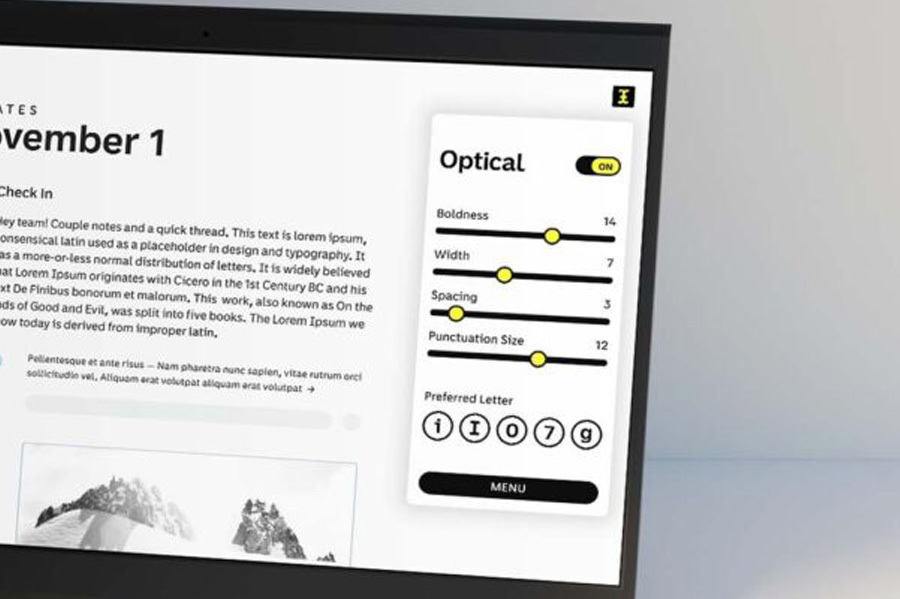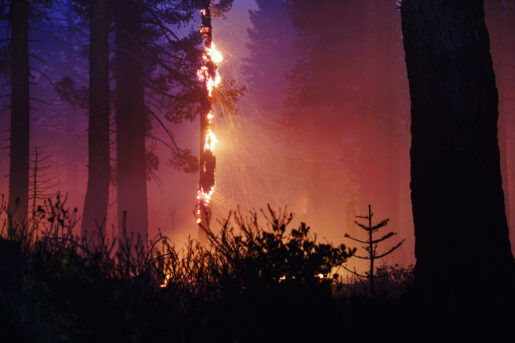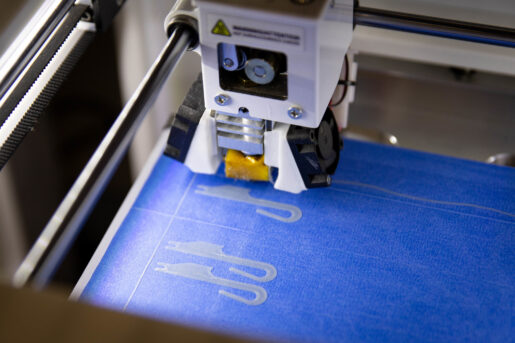Wildland Firefighter Angus Duguid Designs Respirator for Frontline Wildfire Suppression
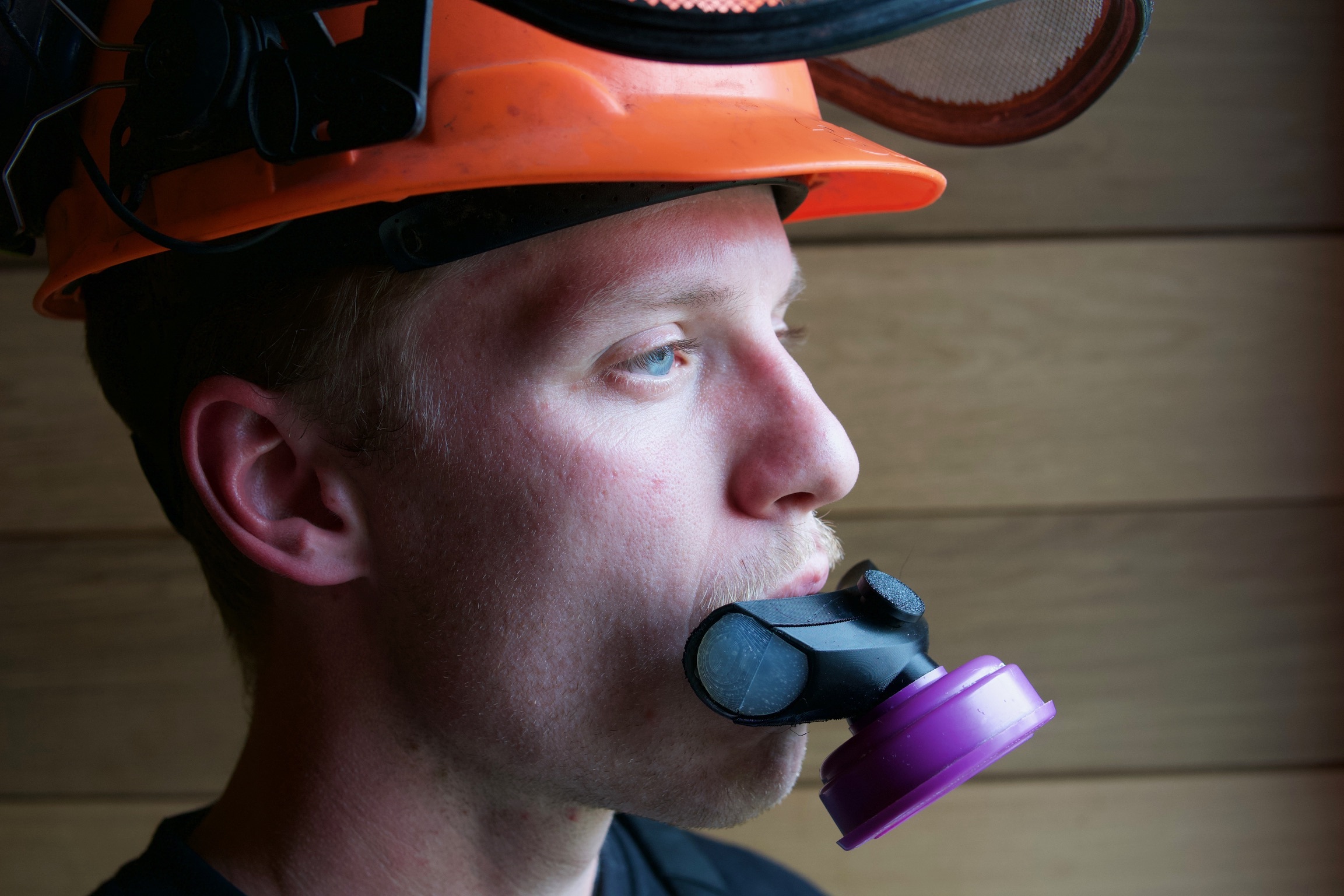
Wildland firefighter Shea demonstrates the Respire respirator, which Angus began developing during his final year of study at Emily Carr University. (Photo courtesy Angus Duguid)
Posted on
The designer, firefighter and emergency medic began developing the device during his final year of studies at Emily Carr University.
Designer, wildland firefighter and emergency medic Angus Duguid (BDes 2024) is field-testing a respirator he designed to reduce smoke inhalation on the frontlines of wildfire suppression.
Respire, developed during Angus’ final year in the Industrial Design program at Emily Carr University of Art + Design (ECU), draws on his years of experience as a firefighter and unit-crew leader to address some of the toughest challenges facing the introduction of new equipment to emergency-service workers.
“Essentially, it’s a response to concerns being voiced on the fire line right now,” Angus says. “Wildland firefighters — pretty much universally — fight fire without respiratory protection. It’s become a bigger conversation recently, and I realized I had a pretty solid skillset both in firefighting and design to try developing potential solutions.”
Structural firefighters — like those we see in our cities and towns — often wear a self-contained breathing apparatus in situations that are dangerous to life or health. These first responders regularly face smoke from human-made materials, which are far more toxic than wood smoke.
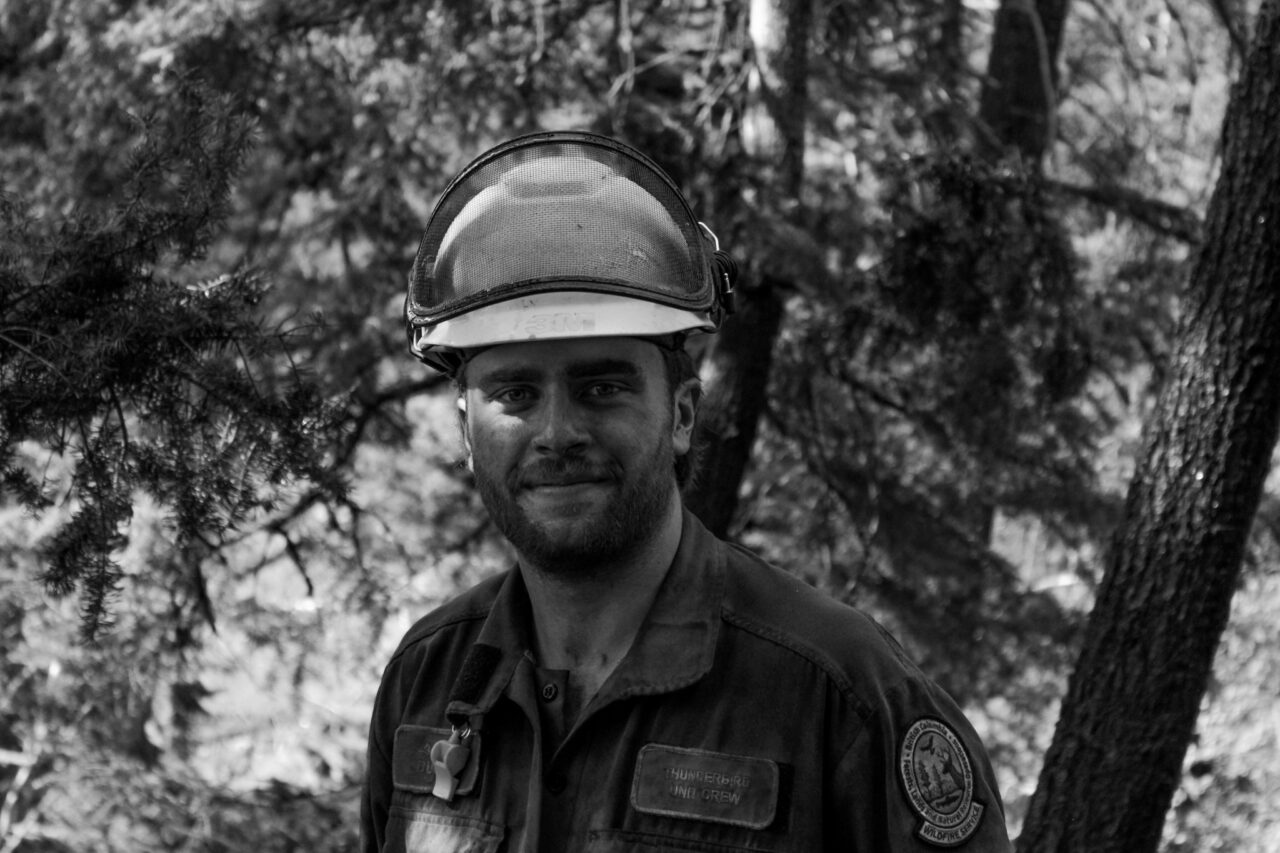
Angus Duguid in the field during wildfire season. (Photo courtesy Angus Duguid)
However, wildfire smoke and ash have negative health impacts as well, especially with regular or long-term exposure. Angus notes he has also encountered burning human-made materials while fighting wildfires.
“We had a few instances last year where we cut trail and found piles of garbage somebody had dumped over the years,” he says.
In recognition of these risks, many fire-management services have been user-testing in recent years to find a commercially available portable respirator fit for wildland firefighters.
But Angus says most existing respirators are incompatible with the rigours of wildland firefighting. He and his colleagues often work up to 16 hours a day, with tremendous physical exertion in extreme heat and on difficult terrain.

The Respire respirator (left) cuts a far slimmer profile than commercially available versions (centre, during a field test conducted by Angus Duguid), and was developed taking cues from snorkels used by SCUBA divers (right). (Photos courtesy Angus Duguid)
A respirator needs to be easily deployed and removed since firefighters aren’t always working directly in smoke and debris. Firefighters also have little time to spare. So, Angus says they’d likely avoid respirators that would need to be stored in their sealed backpacks when not in use.
“I started by personally experiencing what it’s like working on a fire with the current options,” he says. “So, how does it feel lugging a bunch of hose up a hill with a mask on? Or digging? How often can I drink water? How easy is it to take off? That helped me find the real pain points for this equipment.”
Angus notes there is also cultural resistance to change in wildland firefighting since change of any kind can represent an existential risk. So, hearing from colleagues about what works for them was essential to the development of Respire. For instance, some of them voiced concerns about the “halo effect,” where firefighters who wear respirators feel “smoke-proof” and take risks they might otherwise avoid.
Angus settled on a small, portable breathing device partly modelled on a snorkel. Respire is small enough to clip onto a shirt pocket or necklace for easy access. And because it offers only partial coverage, it avoids conjuring a veneer of invincibility for wearers.
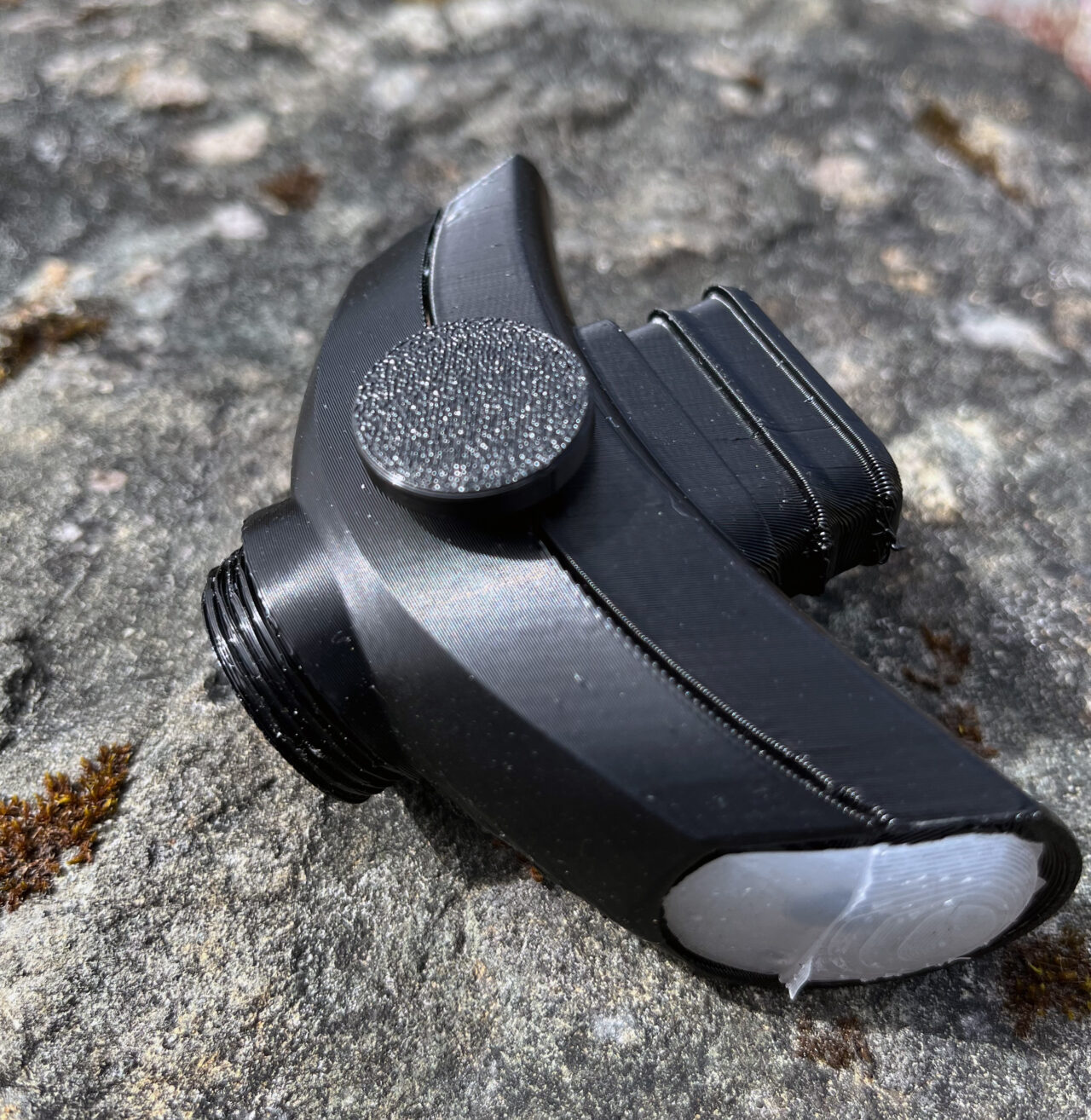
The Respire respirator mouthpiece is compatible with commercially available air filters. (Photo courtesy Angus Duguid)
With the province now well into wildfire season, Angus is testing his respirator on the job. He hopes firsthand experience will help him both fine-tune the design and begin to bring his coworkers on board.
“I’d love to see every firefighter with one of these respirators, even if it only comes out a couple times a season,” he says. “I think it’s a valuable tool, and this concept is better than a lot of the existing masks. It’s also more cost effective. But honestly, even if it just sparks a conversation, I think it’ll be a win.”
Visit Angus on LinkedIn and follow him on Instagram to learn more about his work.
Visit ECU online to learn more about studying Industrial Design at Emily Carr.

